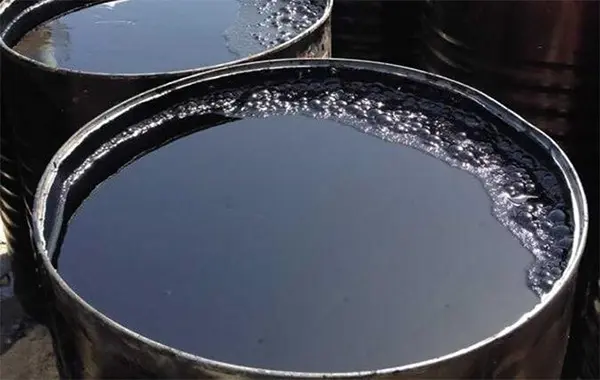Decoding Bitumen Properties: A Comprehensive Analysis
Bitumen, a complex material widely used in various industries, possesses specific properties that determine its composition and characteristics. Different methods are employed to analyze and categorize bitumen, with sulfur-carbon solutions being a common approach. When bitumen is dissolved in such solutions, it can be divided into three major components: carbon, asphaltene, and malton.

Unveiling the Components: Carbon, Asphaltene, and Malton
The carbon component refers to the portion of bitumen that is insoluble in tetrachloride carbon. On the other hand, asphaltene is the insoluble part when bitumen is subjected to solvents like light aliphatic hydrocarbons (e.g., ether). Lastly, malton represents the portion of bitumen that dissolves in light aliphatic hydrocarbons such as heptane. Within malton, there are two minor groups: resins and oils. Resins are brown and semi-hard, contributing to the flexibility and adhesiveness of bitumen. Heavy oils, on the other hand, make bitumen softer, with higher quantities leading to a softer consistency.
The specific composition and percentage of these materials within bitumen are dependent on the source of the bitumen, whether it is derived from oil or minerals. The oxidation process of these materials can also alter their proportions. In general, bitumen is classified into different types based on its properties and characteristics, as summarized in the provided table.
It is worth noting that rock asphalt, or stone bitumen, can contain varying amounts of bitumen, ranging from 7% to 80%. For instance, in Iran, rock asphalt typically consists of 70% to 80% bitumen.
Global Bitumen Market: Types, Production, and Climate Considerations
In the global bitumen market, various types are produced to suit different climate and regional conditions. However, in Iran, bitumen production is relatively limited to two types due to higher costs. Currently, the production focuses on 85/100 bitumen with high penetration and 60/70 bitumen with lower penetration. The choice of bitumen type depends on the climatic conditions, with 85/100 bitumen being suitable for colder regions and 60/70 bitumen for warmer areas.

Enhancing Flexibility: The Role of Polymers in Bitumen
Bitumen’s flexibility can pose challenges in extreme climates. For instance, in desert regions, cold nights cause asphalt to contract, while the warmth of the day can cause its components to separate, leading to cracks and damage. In many countries, polymers are added to bitumen to enhance its flexibility and improve its performance in extreme weather conditions. This practice increases the lifespan of asphalt, reducing the need for frequent repairs and maintenance. Developed countries, in particular, prioritize the longevity and quality of their asphalt roads, aiming for a lifespan of up to 20 years.
Asphalt Challenges: Roadbed Preparation and Specifications
Aside from the type of bitumen used, other factors such as the roadbed and the preparation of the asphalt bed are crucial. When producing asphalt, only around 4% to 5% of the mixture consists of bitumen, with the remaining 96% comprising other materials. Many issues with asphalt performance can be attributed to factors such as poor drainage, inadequate roadbed preparation, insufficient consideration of regional traffic volume, and improper fulfillment of project specifications. In some cases, shortcuts and disregard for established norms may be driven by a desire for short-term gains, neglecting the long-term quality and durability of the asphalt.
Key Tests and Measurements: Evaluating Bitumen Properties
In terms of specifications, several properties of bitumen are commonly evaluated:
Penetration Degree Test: Unraveling Bitumen Hardness
Penetration Degree: This test measures the hardness of bitumen. A standard needle with a 100-gram load is applied to penetrate the bitumen at 25°C for 5 seconds. The penetration value, expressed in tenths of millimeters, indicates the bitumen’s hardness. Lower penetration values correspond to harder bitumen.
Viscosity Matters: Understanding Bitumen Flow Properties
Viscosity: Bitumen viscosity refers to its flow properties. Higher viscosity indicates a more solid consistency. Viscosity is temperature-dependent, with lower temperatures leading to higher viscosity. This characteristic is measured using instruments such as the Saybolt Furol machine or through kinematic methods.
Flash Point and Weight Loss: Temperature Dynamics in Bitumen
Flash Point: The flash point is the temperature at which the bitumen emits flammable gases and ignites when exposed to a flame. It sets the maximum allowable heating temperature for bitumen during various processes.
Weight Loss on Heating: This property measures the weight loss of bitumen at high temperatures. The loss is attributed to the evaporation of some of its oil and petroleum compounds. The weight loss is typically determined by subjecting the bitumen to a temperature of 163°C for a duration of 5 hours, simulating the conditions during asphalt mixing.

Ductility and Solubility: Assessing Stretch and Purity
Ductility: Ductility refers to the ability of bitumen to stretch or deform before breaking. It is determined by pulling a sample of bitumen at a specific speed until it tears, with the increase in length before tearing indicating the ductility property.
Solubility in CS2: Bitumen solubility in solvents such as carbon tetrachloride or carbon-sulfur can indicate the purity of the bitumen. Impurities remain undissolved while the bitumen dissolves. The degree of purity can be calculated by dividing the weight of the bitumen sample by the difference between the weight of impurities and the weight of bitumen.
Softening Point: Exploring Bitumen’s Transformative Temperature
Softening Point: The softening point is the temperature at which bitumen becomes fluid and loses its solid consistency. A higher softening point indicates lower sensitivity to temperature variations. Ordinary bitumen typically has a softening point ranging from 60°C to 70°C.
In Conclusion: Navigating Bitumen’s Complex Landscape
In conclusion, bitumen is a complex material with distinct properties that determine its composition and characteristics. It can be categorized into carbon, asphaltene, and malton components, with the proportions varying based on the source and oxidation process. Different types of bitumen are produced worldwide, tailored to specific climate and regional conditions. The flexibility of bitumen can present challenges in extreme climates, leading to the addition of polymers to enhance its performance. When using bitumen for asphalt production, factors such as roadbed preparation and adherence to project specifications are crucial for longevity and quality. Various tests and measurements, including penetration degree, viscosity, flash point, weight loss on heating, ductility, solubility, and softening point, are conducted to assess the properties and suitability of bitumen for different applications. Understanding these properties is essential for ensuring the appropriate use and performance of bitumen in various industries.



Leave a Reply
You must be logged in to post a comment.